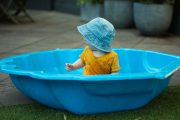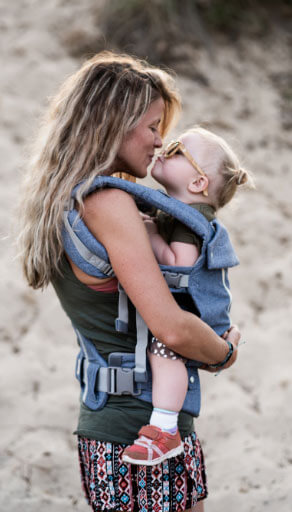6 Myths About Swimming Lessons That Simply Aren’t True
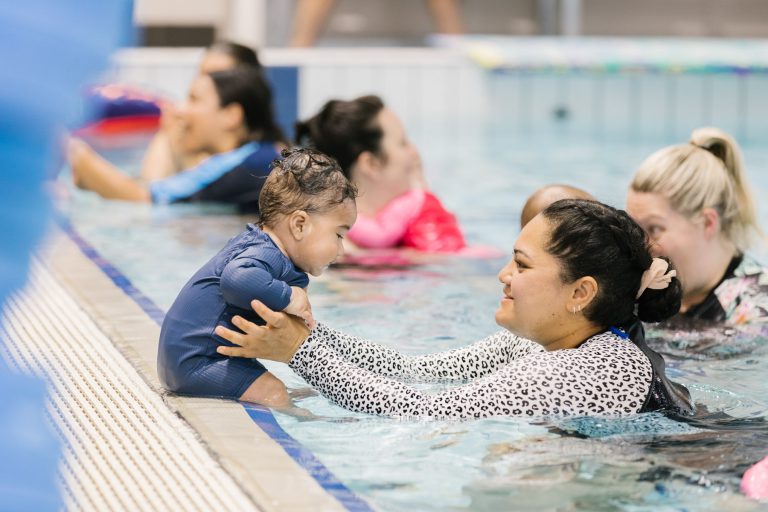
Sponsored post
As parents, it’s our responsibility to keep our children safe around water. By far the best way to do this, in combination with always supervising them around water, is to ensure that they learn adequate water safety skills from a young age. Small children can drown in as little as 2 inches of water, so learning to swim and be safe around water isn’t just for families who have a swimming pool at home, or who spend time at the beach or on our rivers.
When it comes to teaching children to swim there are some common misconceptions that it is important parents are aware of when deciding to enrol their child in swimming lessons.
Today, we’re busting the myths about swimming lessons you may have heard about that aren’t true.
Myth 1: My Child is Too Young for Swimming Lessons
Your baby might not be doing the butterfly stroke from one end of the pool to the other but starting swimming lessons from 4 months onwards can be hugely beneficial in your child’s journey to becoming a competent and confident swimmer. Early familiarity in the water can help to lay the foundations and help them start to develop the skills needed to have confidence in the water. Basically, the earlier you start you baby in a good swimming program, the earlier they will become strong independent swimmers – a skill that could possibly save their life!
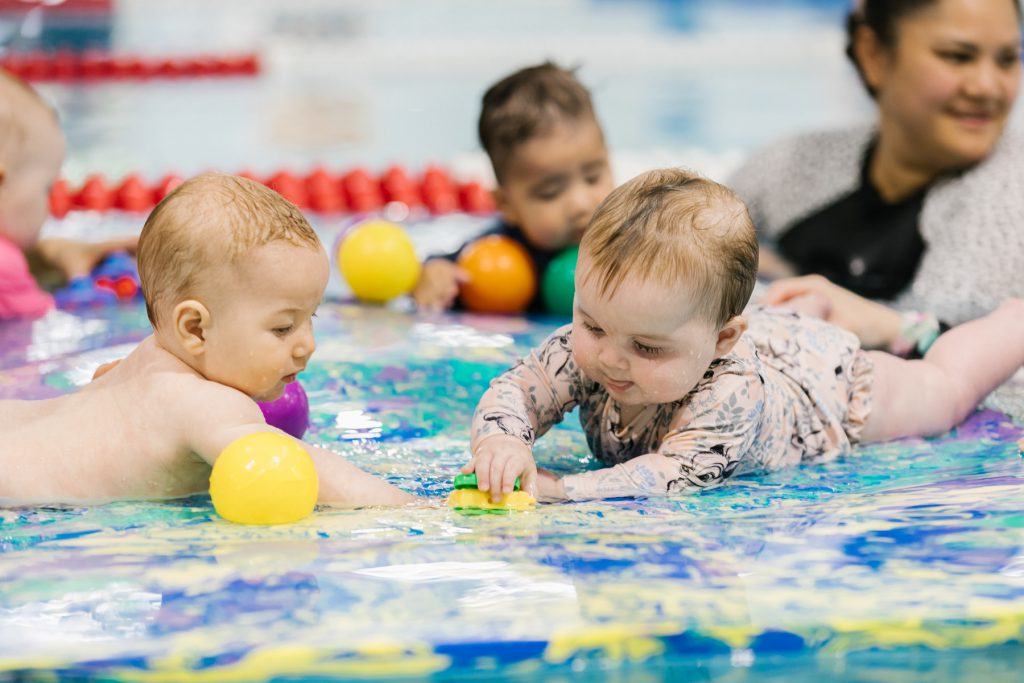
Myth 2: Anyone Can Teach a Child to Swim
Whilst you may be able to teach your child the basics of swimming, swimming instructors are trained and undergo continuous education to enable them to bring all the best techniques to their swimming lessons. When deciding on which swimming school to enrol your child in we recommend looking for a school that also focusses on teaching survival techniques, like Paul Sadler Swimland. Known as the ‘Survival Specialists,’ Paul Sadler Swimland’s swim teachers are trained with over 140 hours of training in the skills of swimming and survival, and the strategies of how to teach these skills. They are nationally accredited and qualified through an independent accredited program as well as having undergone thorough in-house training.
Paul Sadler Swimland’s swimming instructors are qualified to teach children the important skills and lessons that they need to learn to stay safe in the water, such as floating, treading water, how to do a safety circle, etc.
Related: The 8 Water Skills or Lessons Your Child Should Be Learning
Myth 3: My Child Doesn’t Need Any More Lessons Now They Have Learnt to Swim
The truth is that It can be difficult for parents to really know how competent their child is in the water. For example, a child being able to make it from one side of the backyard pool to the other doesn’t mean that they’ve mastered all the skills required for swimming. To really feel confident your child has the skills required to be safe around water leading swim schools such as Paul Sadler Swimland have a goal that all swimmers should be able to complete a 1km swim in one of their indoor facilities. Then ideally they also complete their Open Water Experience, which takes the skills learnt in the pool and applies them to an uncontrolled aquatic environment.
Unfortunately, a large number of Aussie kids still have poor or limited swimming skills, which can put them at risk around water. Like anything, practice makes perfect. If you want your child to retain their swimming and independent drowning prevention skills it is imperative that they practice them regularly.
Myth 4: My Child Should Show Progress Every Week
It’s important for parents to understand that the road to learning swim and survival skills isn’t always linear, so don’t get frustrated if your child doesn’t seem to be making progress. The reality is that there will likely be plateaus and sometimes even dips whilst a new skill is being learnt, and then progress will increase again, which is the case when learning any new skill in life! Sometimes it even appears that a previously learnt skill will decline slightly while a new skill is being learnt, and then it will bounce back!
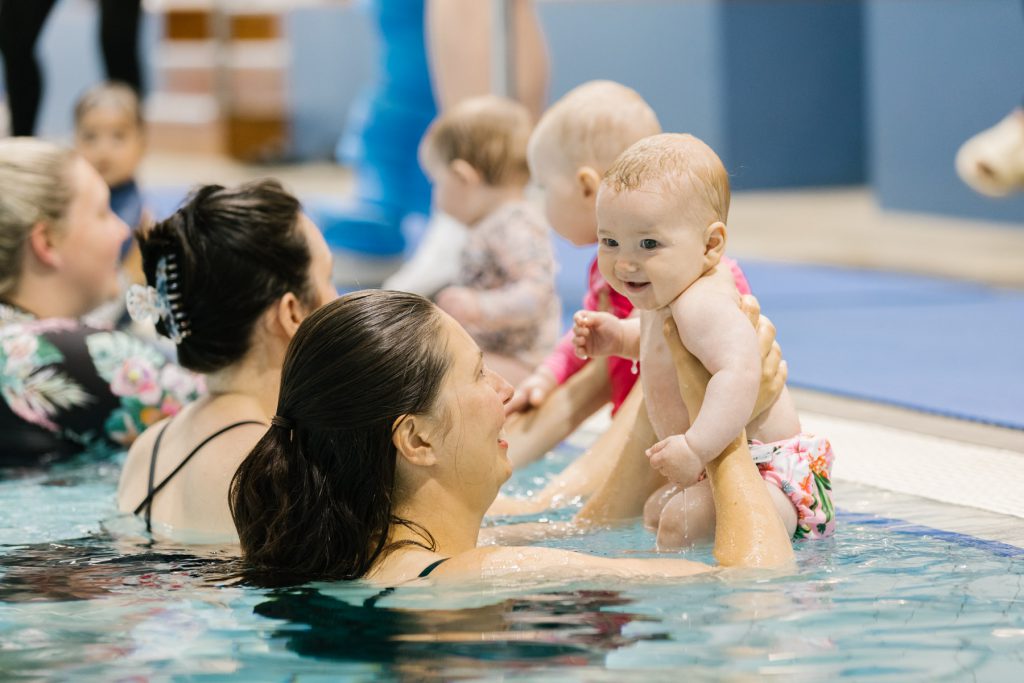
Myth 5: Summer Swimming Lessons are Enough
Whilst summer maybe the most common season for swimming and engaging in leisure time around water – year-round swimming, as we’ve already discussed, is key to advancing your child’s swimming skills. It can be risky to assume that your child has retained knowledge and skills from a previous season after a considerable break from swimming classes. Long periods between swimming lessons can also see children’s skills and confidence regress.
Myth 6: Winter Swimming Will Make My Child Sick
It’s a very common misconception that swimming in winter will cause your child to get sick. In fact, regular physical exercise like swimming may actually boost your child’s immunity and reduces the likelihood of illness. Viruses and germs cause sickness, not leaving your local swimming centre with damp hair!
Related: 6 Reasons Why You Shouldn’t Take a Break From your Child’s Swimming Lessons Over Winter
In addition, as Mark Cecil, CEO of Paul Sadler Swimland points out, “Regular formal swimming lessons can reduce drowning by up to 88% – which is a huge amount! Our pools offer perfect conditions for swimming all day, every day. With pool temperatures set to a delightful 32°C and our deck set for 27°C, so there is no reason to let the weather put you off continuing your child’s swimming lessons.”
Visit Paul Sadler’s Swimland website to find a centre near you.



